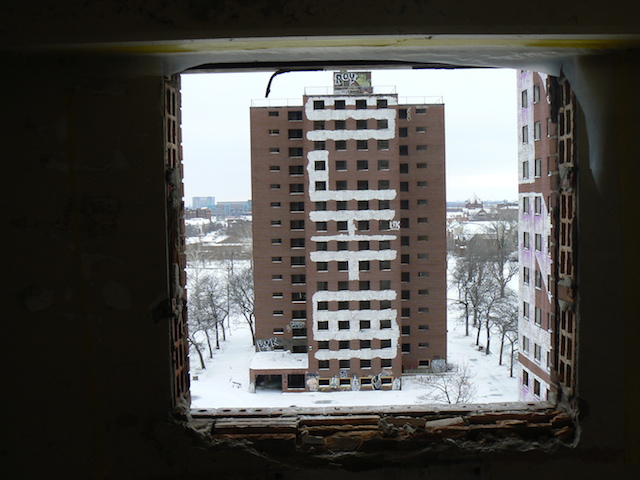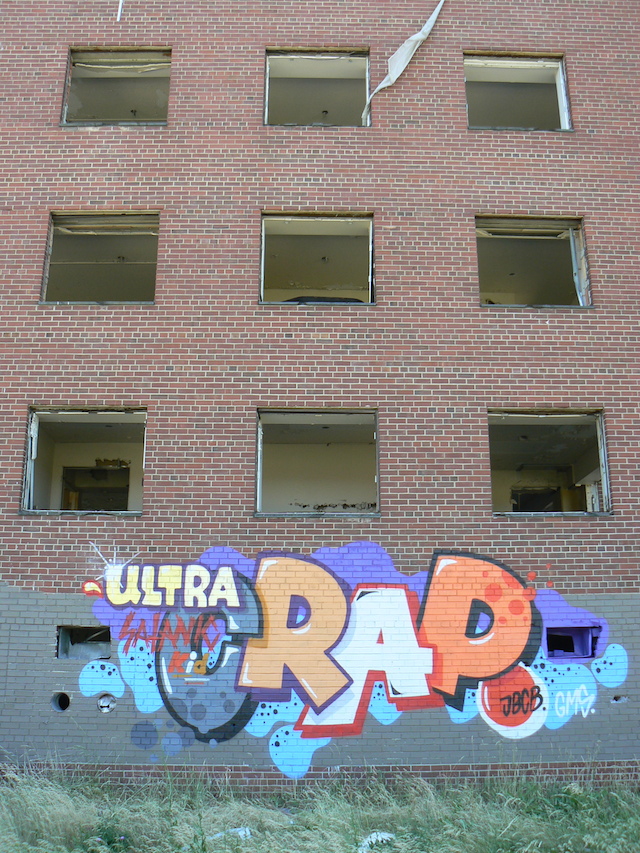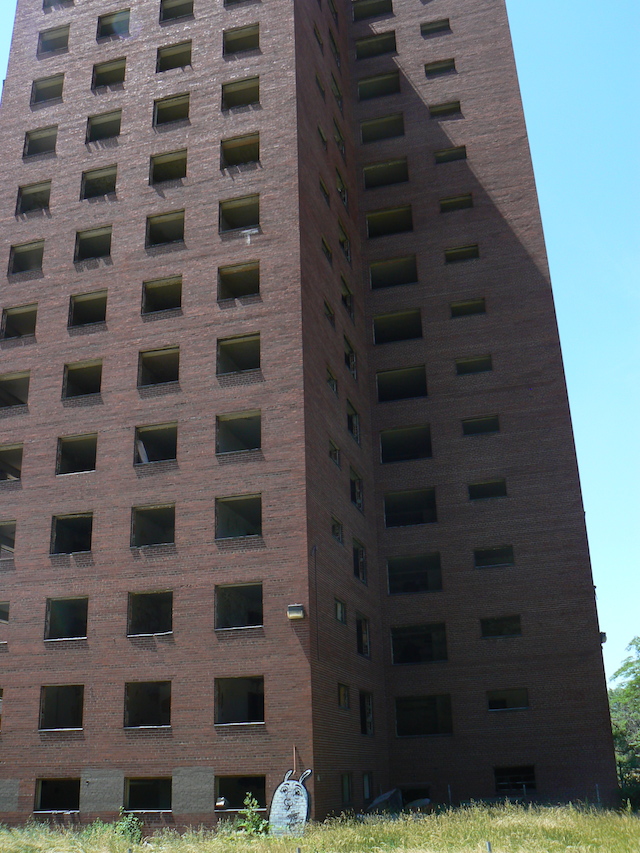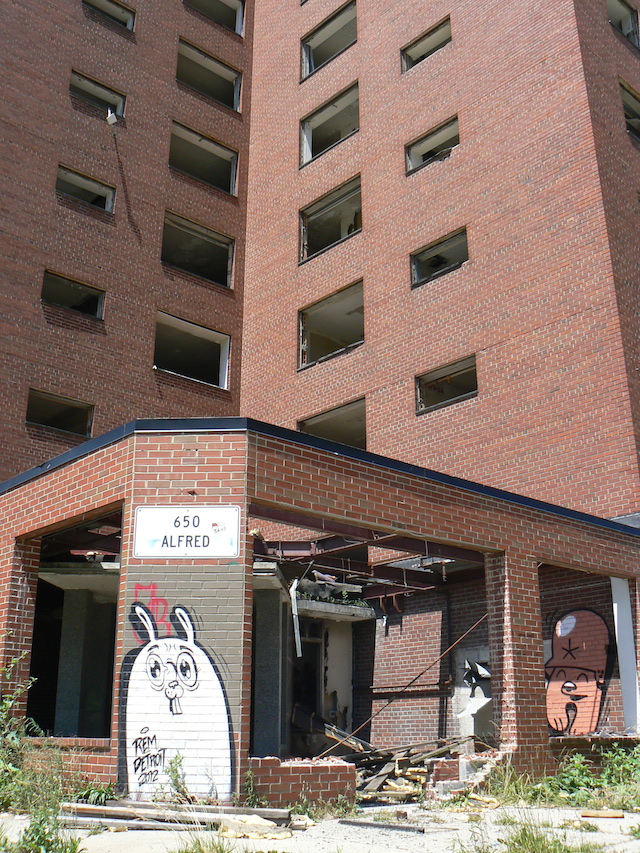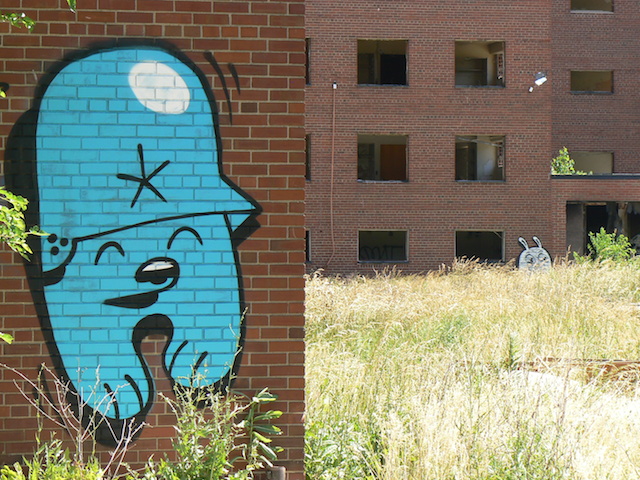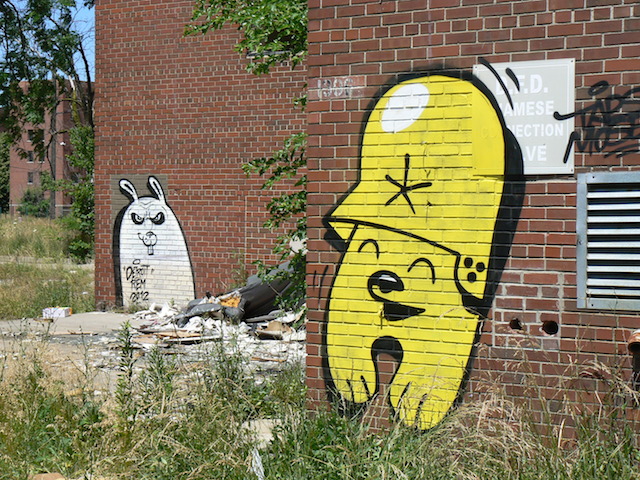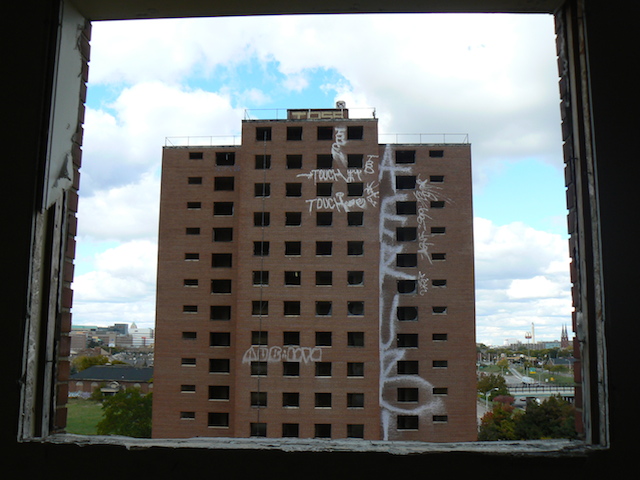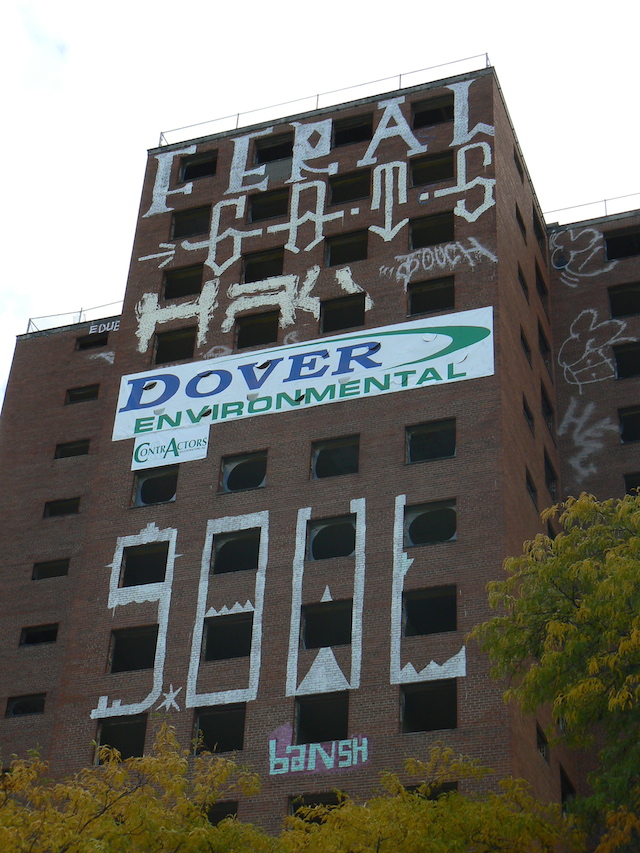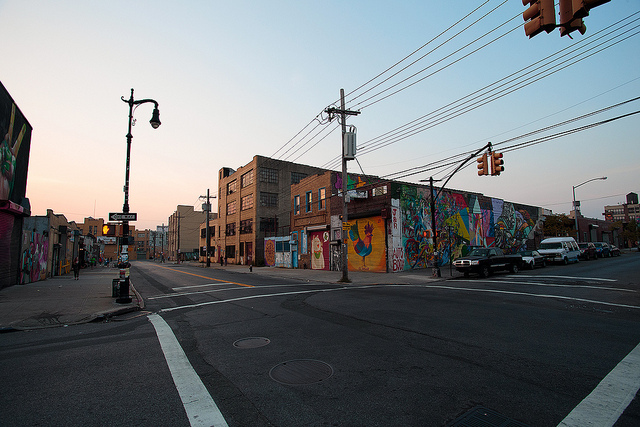
What do Bushwick, Chicago, and Detroit all have in common? Their mural cultures are under threat. In Bushwick, gentrification and greed some to be putting the final nails in the coffin of The Bushwick Collective. In Chicago, the city is failing to pay artists and organizers for murals that they commissioned. In Detroit, city officials are trying to tame graffiti’s Wild West with regulations that are bound to cause problems.
The Bushwick Collective’s year hasn’t started out so well. There was always suspicion among artists and art fans about the project’s motives. Behind closed doors (and sometimes publicly), you’d hear suggestions that The Bushwick Collective was an exploitative gentrification effort rather than a celebration of art, and its no secret that the project is anti-graffiti and doesn’t usually allow political messages in murals. But they have walls, so plenty of artists set aside their reservations and paint there anyway. Now, those rumbling frustrations about gentrification and whitewashing of graffiti have gone explosively public, with ZEXOR dissing over a dozen Bushwick Collective murals with his tags and throw ups.
But are ZEXOR’s accusations based in fact? The latest development at The Bushwick Collective suggests so. This month, what appear to be frames for two billboards were installed on top of Bushwick Collective murals. The (currently empty) billboard frames were installed with complete disregard for the murals they partially cover by Concrete Jungle, The Yok, and Sheryo. So much for subtly transforming the neighborhood in the name of art. Seem to me though that with these billboard installations, The Bushwick Collective is finally showing their true colors.
Sheryo said that she hasn’t asked The Bushwick Collective what happened, but her thoughts on the situation are clear: “It’s such an eyesore they shoulda at least buffed it first… I think there should be mutual respect. Do things right.”
I’ve reached out to The Bushwick Collective on Sunday for comment, as well as for more information about the billboard frames and the building owner’s relationship with the Collective. As of Tuesday night, I have not heard back.
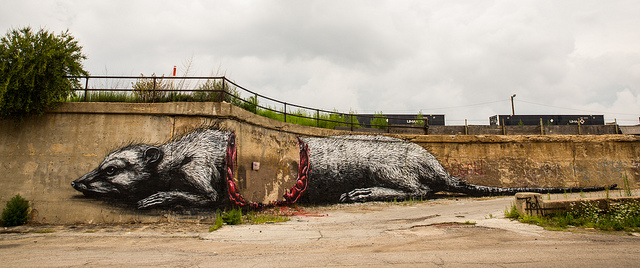
In Chicago, there are a number of great murals by artists like Gaia, Roa and Troy Lovegates that Pawn Works organized in collaboration with the city and Alderman Danny Solis. Unfortunately, it seems that the alderman seriously messed up and the city has so far failed to pay the artists or reimburse Pawn Works for $16,000 in out-of-pocket expenses related to the murals. The city and the alderman claim to be working to fix the problem, but Pawn Works and the artists have been owed money for well over a year. For now, Pawn Works has stopped organizing murals for the city. That mural project was shut down because of Solis’ fiscal mismanagement and bureaucratic snafus, and of course, the artists and Pawn Work still haven’t been paid. At least Solis is “very sorry.”
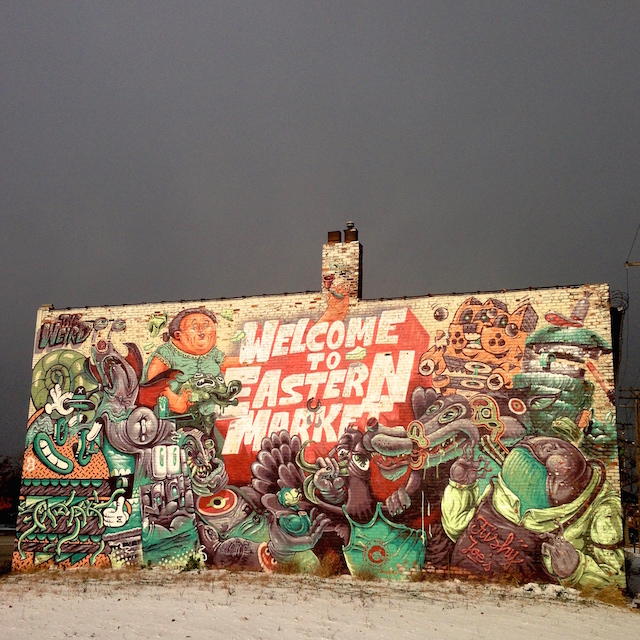
Finally, politicians in Detroit are trying to change the city’s reputation as the Wild West of graffiti. A city council member is working on new anti-graffiti regulations that would fine property owners for not cleaning the graffiti on their buildings. It’s unclear how new regulations will be different from the tickets that the city is already issuing, but presumably they would make it even easier for a Detroit building owner to be ticketed for graffiti. As the Metro Times asks, how do you determine what’s graffiti and what’s a mural? That’s a determination that the city is already messing up, and the proposed solution of a database of all the legal murals in the city is bound to be incomplete and difficult to maintain.
Regulations like these make me nervous, not just for the graffiti and for property owners, but for all public art in Detroit. Imagine you’re a property owner in Detroit and an artist comes to you about painting a mural on your property. Even if legally that’s okay and you’d love some art on your wall, do you really want to take the risk that there will be confusion and you’ll be fined and investigated by the city? These regulations could have a serious chilling effect on the muralism Renaissance taking place in the city right now.
Detroit can’t seem to properly manage the system they’ve already got to ticket property owners for graffiti. Why give that system more power? More intense regulations like the ones being developed now will only serve to hurt Detroit’s property owners, artists, and public art.
In recent years, a lot of great art has come out of The Bushwick Collective, and Pawn Works, and the overall mural culture in Detroit. Maybe, hopefully, I’m just being a Chicken Little about all this news. After all, there are other murals in Bushwick and Chicago, and the Detroit regulations are a long way from being implemented, but let’s not pretend that everything is all okay. These amazing mural cultures, often held up as some of the best in the nation, are under threat from greed and mismanagement.
Photos by Mr Seb, Kevin Tao, and RJ Rushmore

